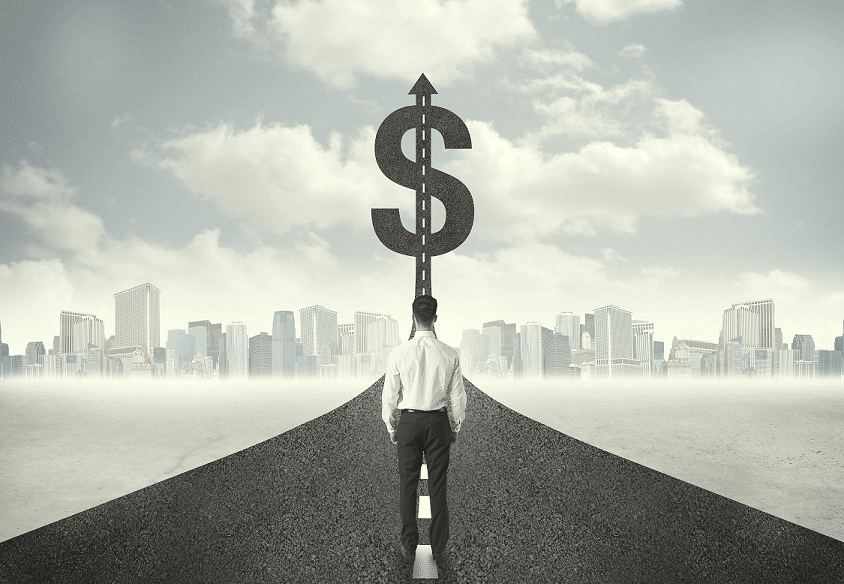What Does Deposit Automation Cost?
Looking to deploy deposit automation? Then you will want to read on to learn about the costs of installing and running deposit automation ATMs. There...
4 min read
 Sean Farrell
:
Oct 13, 2015 7:30:00 AM
Sean Farrell
:
Oct 13, 2015 7:30:00 AM


The steady growth of deposit automation since the early 2000s -- also known as Check 21, no envelope deposit, image deposit or ‘smart’ ATMs -- has transformed the self-service banking environment. A major factor influencing increased deployment is the visible evidence of the mutual benefits the technology provides the financial institution and consumer.
It provides the customer a secure, accurate, accessible and available system to handle common financial transactions like: account deposits, account transfers, cash withdrawals and balance inquiries.
For the financial institution, the investment in deposit automation at the ATM has a direct impact on lowering operational costs associated with deposits of checks and cash, which are a vital stream for the physical branch network. The necessary components for deposit automation at the ATM are defined as follows:
The user interface for deposit automation has changed to achieve optimal speed and convenience. In their earliest form, deposit automation ATMs utilized a ‘dual slot’ format. One slot of the machine was dedicated for cash and the second for checks allowing for only small amounts of cash and single checks to be presented.
The next evolution of the product brought bunch check and bunch cash acceptance capability in addition to the traditional cash presentment slot, receipt slot & ATM or debit card slot. While this added functionality, it seemed to add some complexities to the ATM user experience.
They appreciated the access it offered to extended hours to make deposits but didn’t see the convenience, as the time spent to conduct the transaction successfully was equal to the time it took with a traditional physical paper envelope-accepting machine.
Along came single deposit slot engineering – an enhancement in the deposit automation module of the ATM that was designed to make the transaction experience far better.
Every major ATM manufacturer brands this function differently, but at its core it enables the user to deposit a mixture of bunch cash and bulk check, in any orientation at a single pass.
Single deposit slot technology reduces transaction time by approximately 50% while maintaining accounting accuracy and posting between check and cash in a transaction. The customer experiences a more convenient and faster transaction with record of the deposit and quicker posting time to their account(s).
The image deposit architecture is server/agent based and works in concert with the deposit module described above with the associated application software residing in the ATM. The Consolidation Server is the repository for images coming in from the ATM. It can also archive images for a period of time supporting the ability for a customer to see a check that has cleared with on-line banking.
Major ATM manufacturers have developed end-to-end solutions to support this but there are also some very robust 3rd party or non Original Equipment Manufacturer (OEM) solutions available as well. Selecting the right solution for you should be based on your ATM installed base.
One of the first items to consider is if you want to have the system installed ‘In-House’ or have it ‘Hosted’ in a managed/SaaS format. Hosted solutions are commonplace and can range in costs but average approximately $30,000 for start-up which can include additional fees for services and development.
Since these solutions are often designed for larger tier financial institutions, there became a need for 3rd party solutions that were more readily available, faster to implement and costing half the amount without sacrificing functionality, reliability, availability or security. These may also include services from well-known core banking providers.
Best practices state that those financial institutions that have less than 5 ATMs are best suited for the outsource model. Those that have over 5 should consider the in-house model as it is less expensive.
A vital software component at the ATM is the image transfer agent. Its purpose is to isolate and file the certified image of the check (item) and stage it for encrypted and secure transfer to the associated consolidation server dedicated to the FI.
When conducting an automated deposit, standard transactions can still be supported by the FI’s ATM processor through the TCP/IP and IP secure communication to the processor (transactions like PIN validation, available amounts, request for receipt, cash withdrawal, account transfer, etc.). When the user requests a deposit of check and/or cash, the check and cash are deposited through the single slot where the items and cash are ‘read’ and validated within the module.
The special software agent installed within the ATM is designed to capture the image of the checks coming in. A second individual static IP address is assigned to this agent and the Consolidation Server (CServer) so that images coming from individual ATMs can be tracked and received consistently and accurately.
NCR and Diebold have agents designed for their solution specifically, but NCRs Imagemark Passport agent for the ATM can support multivendor environments. The agent is a per unit price ranging from $300 - $500 per ATM and can be installed locally to each ATM or via an exchange system.
In all cases, a FI must purchase the agent and license for the image transfer agent directly from the manufacturer. Annual software maintenance fees for ongoing development and solution support of the agent may apply.
A crucial ongoing piece to this solution is the ability for the FI to have full access and control over deposit processes through ‘viewer’ capability. This is also referred to as POD or Proof of Deposit capability and many of the solutions offered through a given ATM processor/host or 3rd party SaaS providers have predetermined much of the ‘decisioning’ matrix for deposits of check items such as: MICR read, ink levels, physical dimensions of the item, etc.
Your deposit processing staff can still program tolerances for deposit amounts such as: hold for review all check’s over $1,000. Your FI can also elect to release immediate availability for cash deposits. POD controls offer versatility and scalability.
Equally as important is the back office POD system that allows for corrections to deposits at the back office. For example: if a customer keys in a deposit for $5 but is really depositing $50 the proof operator can make this correction within the GL and post the deposit properly.
This eliminates the customer having to ‘proof’ their deposit at the ATM, which keeps the convenience metrics and satisfaction levels positive. Features within the ATM and deposit automation software also allow for CAR/LAR, ICR and OCR to mitigate, if not completely reduce, the passing of a suspect (fraudulent) item at the point of deposit at the ATM.
Also, solution offerings from QDS have a constant ‘heartbeat’ for guaranteed image pass through in the event of a communications failure ensuring that no deposit images are lost and all are produced in real time.
The back office workflow solutions will also allow your FI deposit operations team to produce a balanced file and convert to the Fed X9.37 file format with your cash letter and is certified with a wide range of item processors.
QDS is a specialist in End to End deposit automation design, implementation and ongoing lifecycle solution support. Our range of cost effective and easily scalable solutions can deliver this important channel to your customers and for your Financial Institution.
Contact us today to arrange a demonstration and discovery session on how our deposit automation expertise can benefit you.
To learn more about how to successfully install and manage an ATM, download our free resource: The ATM Installation Preparation Checklist.

Looking to deploy deposit automation? Then you will want to read on to learn about the costs of installing and running deposit automation ATMs. There...

With the rise in mobile capture, some may believe that deposit automation at the ATM is an expensive and unnecessary investment. However, as the ...

Technology has revolutionized the banking industry, leaving financial institutions wondering which advancements make sense for their unique needs....